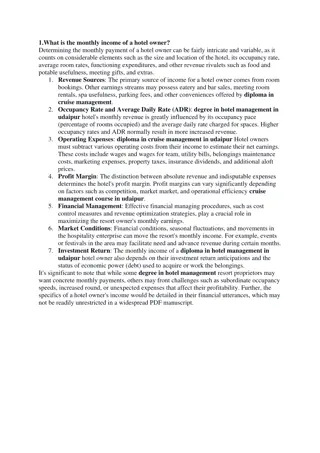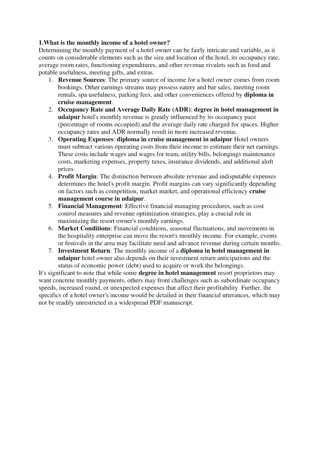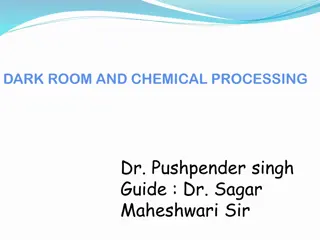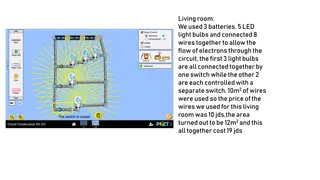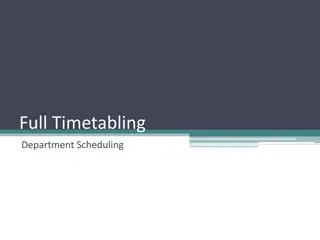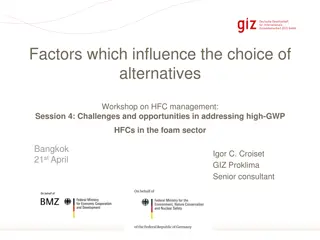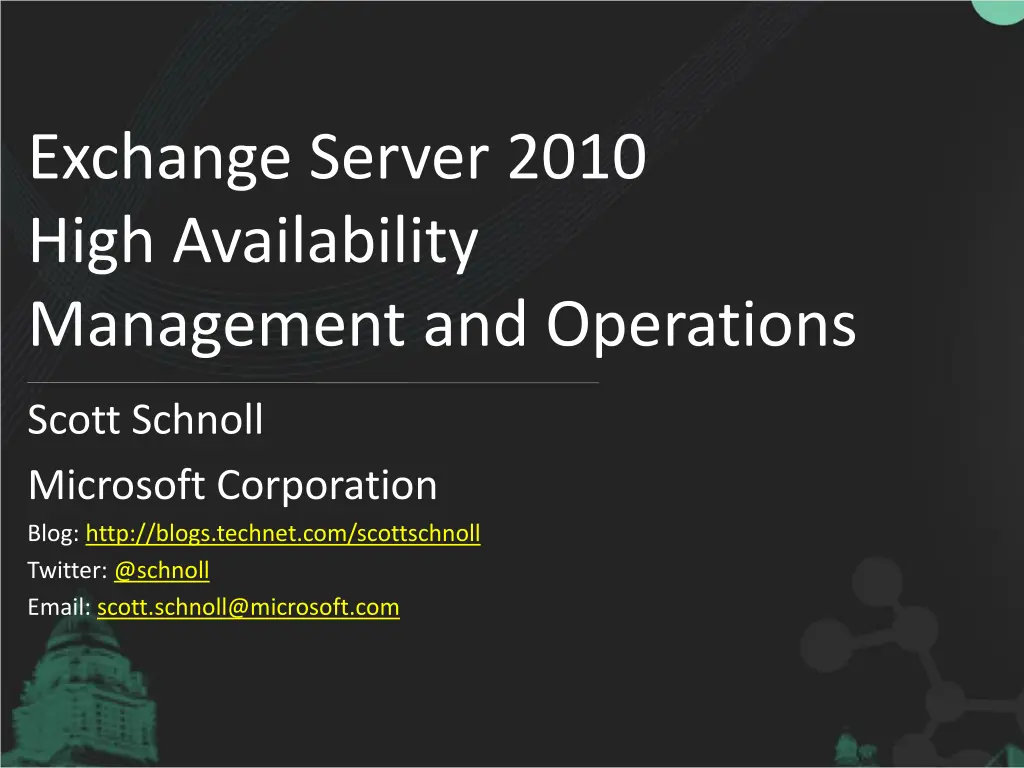
High Availability Management and Operations for Exchange Server 2010
Explore comprehensive guidance on managing high availability for Exchange Server 2010, covering deployment, configuration, maintenance, troubleshooting, monitoring, recovery, and best operational practices with detailed instructions and real-world scenarios.
Download Presentation

Please find below an Image/Link to download the presentation.
The content on the website is provided AS IS for your information and personal use only. It may not be sold, licensed, or shared on other websites without obtaining consent from the author. If you encounter any issues during the download, it is possible that the publisher has removed the file from their server.
You are allowed to download the files provided on this website for personal or commercial use, subject to the condition that they are used lawfully. All files are the property of their respective owners.
The content on the website is provided AS IS for your information and personal use only. It may not be sold, licensed, or shared on other websites without obtaining consent from the author.
E N D
Presentation Transcript
Exchange Server 2010 High Availability Management and Operations Scott Schnoll Microsoft Corporation Blog: http://blogs.technet.com/scottschnoll Twitter: @schnoll Email: scott.schnoll@microsoft.com
Agenda High Availability Cmdlets and Scripts Deployment and Configuration Maintenance Troubleshooting and Monitoring Recovery Ancillary Operational Best Practices Real-World Operational How To s Operational Notes
HIGH AVAILABILITY CMDLETS AND SCRIPTS
Deployment and Configuration Database Availability Groups New-DatabaseAvailabilityGroup Create a DAG in Active Directory Get-DatabaseAvailabilityGroup View DAG properties Set-DatabaseAvailabilityGroup Configure DAG properties Remove-DatabaseAvailabilityGroup Delete a DAG from Active Directory Database Availability Group Membership Add-DatabaseAvailabilityGroupServer Add a Mailbox server to a DAG Remove-DatabaseAvailabilityGroupServer Remove a Mailbox server from a DAG
Deployment and Configuration Database Availability Group Networks New-DatabaseAvailabilityGroupNetwork Create a DAG network Get-DatabaseAvailabilityGroupNetwork View properties of a DAG network Set-DatabaseAvailabilityGroupNetwork Configure properties of a DAG network Remove-DatabaseAvailabilityGroupNetwork Delete a DAG network Mailbox Database Copies Add-MailboxDatabaseCopy Create a passive copy of a mailbox database Set-MailboxDatabaseCopy Configure properties of a mailbox database copy Remove-MailboxDatabaseCopy Delete a passive copy of a mailbox database
Maintenance Mailbox Database Copies Suspend-MailboxDatabaseCopy Suspends continuous replication and/or activation for a passive copy of a mailbox database Resume-MailboxDatabaseCopy Resumes continuous replication and/or activation for a passive copy of a mailbox database Update-MailboxDatabaseCopy Seeds a passive copy of a mailbox database and/or it s content index catalog Move-ActiveMailboxDatabase Perform a database or server switchover and activate passive copy(ies) of mailbox database(s)
Maintenance DAGs and DAG Members StartDagServerMaintenance.ps1 Put a DAG member into maintenance mode to being a scheduled outage StopDagServerMaintenance.ps1 Take a DAG member out of maintenance mode to end a scheduled outage RedistributeActiveDatabases.ps1 Balance a DAG that has become un-balanced over time
Troubleshooting and Monitoring DAGs and Continuous Replication Get-MailboxDatabaseCopyStatus View health and status information for a replicated mailbox database Test-ReplicationHealth Check health of all aspects of replication, replay and cluster for a DAG CollectOverMetrics.ps1 Gather information about database mounts, moves, and failovers over a specific time period CollectReplicationMetrics.ps1 Collect performance metrics for continuous replication in real-time CheckDatabaseRedundancy.ps1 Checks for and alerts on condition where you are down to a single copy of a replicated database
Recovery Site Resilience / Datacenter Switchovers Stop-DatabaseAvailabilityGroup Mark DAG members as down during a datacenter switchover Restore-DatabaseAvailabilityGroup Shrink DAG and restore quorum to surviving DAG members during a datacenter switchover Start-DatabaseAvailabilityGroup Reincorporate recovered or restored DAG members during re-activation of (failback to) a primary datacenter
Ancillary Auto database mount dial / Database activation policy Get-MailboxServer View properties of a Mailbox server (AutoDatabaseMountDial, DatabaseCopyAutoActivationPolicy, MaximumActiveDatabases, and DAG membership) Set-MailboxServer Configure AutoDatabaseMountDial, MaximumActiveDatabases or DatabaseCopyAutoActivationPolicy for a DAG Get-MailboxDatabase View properties of a mailbox database (DataMoveReplicationConstraint) Set-MailboxDatabase Configure DataMoveReplicationConstraint for a replicated mailbox database
Performance Data Collection Active copy database IO latency MSExchange Database\I/O Database Reads (Attached) Average Latency should average <20 ms and have spikes no greater than 100 ms MSExchange Database\I/O Database Writes (Attached) Average Latency should be less than the MSExchange Database\I/O Database Reads (Attached) Average Latency when battery-backed write caching is utilized Database\Database Page Fault Stalls/sec should always = 0 on production Mailbox servers
Performance Data Collection Active copy log IO latency MSExchange Database\IO Log Writes Average Latency should always be <10 ms Database\Log Record Stalls/sec should average less than 10 per second, with spikes no greater than 100 per second Database\Log Threads Waiting should average less than 10
Performance Data Collection Passive copy database IO latency MSExchange Database\I/O Database Reads (Recovery) Average Latency should average <200 ms, with spikes no greater than 1000 ms MSExchange Database\I/O Database Writes (Recovery) Average Latency should be less than the MSExchange Database\I/O Database Reads (Recovery) Average Latency when battery-backed write caching is utilized Database\Database Page Fault Stalls/sec should be 0 on production servers
Performance Data Collection Passive copy log IO latency MSExchange Database\IO Log Reads Average Latency should average <200 ms, with spikes no greater than 1000 ms
Performance Data Collection Non-HA counters are also very important to collect! Information Store and Information Store RPC Database Content Indexing RPC Client Throttling Store Client Requests Mailbox Assistants Calendar Attendant See http://technet.microsoft.com/en-us/library/ff367871.aspx for list of counters and thresholds
Event Log Collection Custom Views Microsoft Exchange with Database Availability Group Events HA Event Sources MSExchange Cluster MSExchangeCluster MSExchangeRepl Non-HA, but related Event Sources ESE ExchangeStoreDB MSExchangeIS Mailbox Store
Event Log Collection Crimson Channel Events Applications and Services Logs\Microsoft\Exchange HighAvailability BlockReplication Debug Operational TruncationDebug MailboxDatabaseFailureItems Debug Operational Applications and Services Logs\Microsoft\Windows FailoverClustering
Alerts Primary conditions for sending alerts Replication not keeping up Database or content index unhealthy Free disk space low on database or log volume Database or log file corruption DAG or cluster problems Single copy alerts
Single Copy Alert Monitor for periods in which a replicated database is down to a single healthy copy Particularly critical in JBOD environments In a RAID environment, a single disk failure does not affect an active mailbox database copy In a JBOD environment, a single disk failure triggers a database failover
Single Copy Alert CheckDatabaseRedundancy.ps1 Monitors the redundancy of replicated mailbox databases by validating that there is at least two configured and healthy and current copies, and to alert you when only a single healthy copy of a replicated database exists Both active and passive copies are counted when determining redundancy CheckDatabaseRedundancy.ps1 -MailboxDatabaseName "Mailbox Database 1928496050"
Single Copy Alert Automatically installed as a scheduled task in SP1 Database One Copy Alert Allow task to run as part of regular operations By default, script run every 60 minutes http://technet.microsoft.com/en- us/library/dd351258.aspx#CheckDBRedun
Maintaining Balanced DAGs Active mailbox database copies change hosts several times throughout a DAG's lifetime As a result, DAGs can become unbalanced
Maintaining Balanced DAGs DAG with 4 databases and 4 copies of each database (16 databases on each server) Four copies of each database, therefore only four possible values for Activation Preference (1, 2, 3, or 4) DAG is unbalanced in terms of number of active databases hosted by each DAG member, number of passive databases hosted by each DAG member, and activation preference count of the hosted databases Active databases Passive databases Mounted databases Dismounted databases Preference count list Server EX1 5 11 5 0 4, 4, 3, 5 EX2 1 15 1 0 1, 8, 6, 1 EX3 12 4 12 0 13, 2, 1, 0 EX4 1 15 1 0 1, 1, 5, 9
Maintaining Balanced DAGs RedistributeActiveDatabases.ps1 balances a DAG BalanceDbsByActivationPreference Script attempts to move databases to their most preferred copy, based on Activation Preference, without regard to Active Directory site BalanceDbsBySiteAndActivationPreference Script attempts to move active databases to their most preferred copy, while also trying to balance active databases within each Active Directory site Active databases Passive databases Mounted databases Dismounted databases Preference count list Server EX1 4 12 4 0 4, 4, 4, 4 EX2 4 12 4 0 4, 4, 4, 4 EX3 4 12 4 0 4, 4, 4, 4 EX4 4 12 4 0 4, 4, 4, 4
Maintaining Balanced DAGs RedistributeActiveDatabases.ps1 has many parameters You can produce reports, log events, include non-replicated databases, etc. See http://technet.microsoft.com/en- us/library/dd335158.aspx for list of parameters Active databases Passive databases Mounted databases Dismounted databases Preference count list Server EX1 4 12 4 0 4, 4, 4, 4 EX2 4 12 4 0 4, 4, 4, 4 EX3 4 12 4 0 4, 4, 4, 4 EX4 4 12 4 0 4, 4, 4, 4
REAL-WORLD OPERATIONAL HOW-TO S
Configure DAG Properties Set-DatabaseAvailabilityGroup IP Address(es) Witness Server, Witness Directory Alternate Witness Server, Alternate Witness Directory DAC Mode Replication Port Network Discovery Network Compression Network Encryption
Configure DAG Properties Set-DatabaseAvailabilityGroup Set-DatabaseAvailabilityGroup -Identity DAG1 -AlternateWitnessDirectory C:\DAGFSW\DAG1.contoso.com -AlternateWitnessServer EXHUB3 Set-DatabaseAvailabilityGroup -Identity DAG1 -DatabaseAvailabilityGroupIpAddresses 10.0.0.8,10.0.1.8 Set-DatabaseAvailabilityGroup -Identity DAG1 -DatacenterActivationMode DagOnly Set-DatabaseAvailabilityGroup -Identity DAG1 -ReplicationPort 63132 Set-DatabaseAvailabilityGroup Identity DAG1 -DiscoverNetworks
DAG Networks and iSCSI Prevent DAG from using iSCSI network as DAG network 1. Set-DatabaseAvailabilityGroupNetwork -Identity DAG2\DAGNetwork02 -ReplicationEnabled:$false -IgnoreNetwork:$true 2. Cluster network ClusterNetworkName /prop Role=0
Check Database Availability Group Status Get-DatabaseAvailabilityGroup DAG1 | %{ $_.Servers | %{ Get-MailboxDatabaseCopyStatus -Server $_ } } Name Status CopyQueue ReplayQueue LastInspectedLogTime Length Length ---- ------ --------- ----------- -------------------- DB2\E14EX2 Mounted 0 0 Healthy DB1\E14EX2 Healthy 0 0 11/9/2010 9:27:49 AM Healthy DB3\E14EX2 Healthy 0 0 11/9/2010 1:48:02 AM Healthy DB4\E14EX2 Mounted 0 0 Healthy DB1\E14EX1 Mounted 0 0 Healthy DB3\E14EX1 Mounted 0 0 Healthy DB4\E14EX1 Healthy 0 0 11/9/2010 2:16:38 PM Healthy DB2\E14EX1 Healthy 0 0 11/9/2010 2:17:10 PM Healthy ContentIndex State ------------
Check Database Availability Group Status Get-DatabaseAvailabilityGroup DAG1 | %{ $_.Servers | %{ Test-ReplicationHealth -Server $_ } } Server Check Result Error ------ ----- E14EX2 ClusterService E14EX2 ReplayService E14EX2 ActiveManager E14EX2 TasksRpcListener E14EX2 TcpListener E14EX2 DagMembersUp E14EX2 ClusterNetwork E14EX2 QuorumGroup E14EX2 FileShareQuorum E14EX2 DBCopySuspended E14EX2 DBCopyFailed E14EX2 DBInitializing E14EX2 DBDisconnected E14EX2 DBLogCopyKeepingUp E14EX2 DBLogReplayKeepingUp E14EX1 ClusterService E14EX1 ReplayService E14EX1 ActiveManager E14EX1 TasksRpcListener ------ Passed Passed Passed Passed Passed Passed Passed Passed Passed Passed Passed Passed Passed Passed Passed Passed Passed Passed Passed -----
Verify Mailbox Database Backups Backup status for all mailbox databases in Org Get-MailboxDatabase -Status | ft Name, Server, *Backup* Backup status for mailbox databases on specific server $Databases = Get-MailboxDatabase -Server <ServerName> -Status $Databases | ft Name, *Backup*
Check Database Distribution (DAG Balancing) Check current database distribution RedistributeActiveDatabases.ps1 -DagName DAG1 - ShowDatabaseDistributionByServer | ft Rebalance a DAG using activation preference and show a summary report when finished RedistributeActiveDatabases.ps1 -DagName DAG1 - BalanceDbsByActivationPreference -ShowFinalDatabaseDistribution
Perform a Server Switchover A task that you perform to move all active mailbox database copies from their current Mailbox server to one or more other Mailbox servers in the DAG Move-ActiveMailboxDatabase -Server MBX1 Move-ActiveMailboxDatabase -Server MBX4 -ActivateOnServer MBX5
Perform a Database Switchover A task that you perform to designating a passive copy as the new active copy of a mailbox database Move-ActiveMailboxDatabase DB3 -ActivateOnServer MBX4 Move-ActiveMailboxDatabase DB4 -ActivateOnServer MBX3 -MountDialOverride:None Move-ActiveMailboxDatabase DB5 MBX6 SkipClientExperienceChecks Move-ActiveMailboxDatabase DB5 MBX6 -SkipLagChecks
Active Manager Provides the interface for administrative tasks The server holding the Primary Active Manager (PAM) role performs the tasks Consider the following database switchover
Database Switchover An administrator starts a task to perform a database switchover (Move-ActiveMailboxDatabase) The task client makes an RPC call to the Microsoft Exchange Replication service on a DAG member (based on lookup msExchMasterServerOrAvailabilityGroup) PowerShell (RBAC) If server contacted is not the PAM, the task is referred to the PAM. If server contacted, is the PAM continue and initiate move RPC. DAG PAM service locates mounted database copy by consulting persistent storage
Database Switchover If the server with the active database is reachable, the PAM issues a dismount request: If the database is mounted remotely, send the request to the remote Replication service If the database is mounted locally, send the request to the Information Store service PowerShell (RBAC) DAG When the dismount completes, the PAM reads and updates database location information in persistent storage PAM Replication service contacts the Replication service on the server that is to host the new active copy of the database
Database Switchover The Source Replication service copies the remaining logs to the target server The Target Replication service issues mount request to the Target Information Store service The Information Store service replays logs and mounts database PowerShell (RBAC) The Target Information Store service returns success or failure to the Target Replication service DAG The Target Replication service reports success or failure to the PAM The PAM reports success or failure to the remote PowerShell Remote PowerShell returns success or failure message to the task initiator
Active Manager Which server is the current PAM? Get-DatabaseAvailabilityGroup DAG1 | fl PrimaryActiveManager Move PAM role Move-ClusterGroup Cluster Group -Node MBX2 or Cluster group cluster group /move
Database Switchovers Bypass internal checks to perform a switchover SkipHealthChecks - bypass database status check and move an active copy that is in a Failed state Performs additional validation to ensure that the log files are consistent, which can take a considerable amount of time SkipLagChecks - allow a copy to be activated that has replay and copy queues outside of the configured auto database mount dial SkipClientExperienceChecks - bypass content index health check and activate a copy with an unhealthy or unusable content index
Database Seeding Seeding is explicitly performed unless you use SeedingPostponed Seeding uses internal (private) ESE streaming backup APIs Replication service on target initiates a seeding request to Replication service on source using TCP socket on DAG seeding port Source Replication service initiates a local ESE backup session to the Information Store service Source Replication service streams data to target Replication service Exchange 2010 can seed from any healthy database copy Database and index can be seeded together or independently
Database Seeding Default network selection for seeding If the source server and target server are on the same subnet and a replication network has been configured that includes the subnet, the replication network will be used If the source server and target server are on different subnets, even if a replication network that contains those subnets has been configured, the MAPI network will be used for seeding
Database Seeding Override default network selection Update-MailboxDatabaseCopy -Identity DB1\MBX1 -SourceServer MBX2 -Network DAG1\Replication Override default DAG encryption / compression settings Update-MailboxDatabaseCopy -Identity DB1\MBX1 -SourceServer MBX2 -Network DAG1\Replication NetworkCompressionOverride:Off Update-MailboxDatabaseCopy -Identity DB1\MBX1 -SourceServer MBX2 -Network DAG1\Replication NetworkEncryptionOverride:UseDAGDefault




